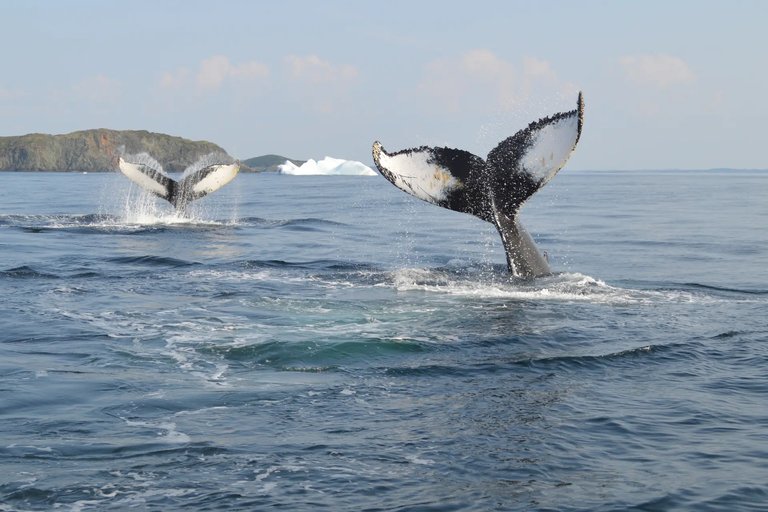Outdoors & Nature
Whale Sightings Increase Along Newfoundland Coast
Marine biologists report a rise in humpback whale activity off the coast, thrilling tourists and offering researchers valuable data.
Published on 2025-07-21T22:15:28
By Colin Bouchard

Tourists and marine biologists are celebrating a spike in humpback whale sightings along Newfoundland’s coast this summer. The increase, attributed to favorable ocean conditions and rising krill populations, is offering both awe-inspiring moments and valuable scientific data.
Over the past month, whale-watching operators based in St. John’s, Trinity Bay, and Bonavista have reported nearly daily sightings, with some boats encountering pods of up to 15 whales at a time. These include adults, calves, and even a few rare breaching displays.
“It’s been an incredible season,” said Susan Reilly, a marine naturalist who leads tours out of Witless Bay. “We’re seeing more whales, more frequently, and they’re staying in the area longer than usual.”
Scientists from Memorial University’s Ocean Sciences Centre are conducting real-time research alongside tourism operators. By collecting tissue samples and acoustic recordings, they’re tracking whale behavior and population health with unprecedented access.
Dr. Ahmed Drouin, who leads the university’s marine mammal research program, attributes the boom to a surge in capelin and krill along the North Atlantic shelf. “Food sources are abundant this year, drawing whales closer to shore and extending their foraging windows,” he explained.
While the resurgence is thrilling for spectators, it also underscores the importance of ocean health. Researchers caution that climate variability remains a factor, and continued monitoring is essential to understand whether the trend will persist.
Tourism officials have embraced the opportunity. Local economies, particularly in smaller outports, are seeing a boost as visitors flock to coastal lookouts and book chartered excursions. Shops, restaurants, and inns report record summer traffic.
To ensure the animals’ safety, the Canadian Coast Guard has issued new advisories for boat operators, including minimum distance guidelines and speed limits near known feeding areas. These efforts are designed to minimize noise disturbance and reduce collision risk.
Whale-watching outfits are also participating in voluntary codes of conduct, pledging to respect wildlife and educate guests on marine conservation. “We want to show people these whales without harming them,” said Reilly. “It’s about coexistence.”
Local schools are taking advantage of the season as well. Several field trips have brought students to the coast to witness marine life firsthand and learn about ocean ecology from visiting scientists.
The provincial government has allocated funding for a new interpretive center in Bay Bulls focused on marine biodiversity and whale migration. Slated to open next spring, it will house interactive exhibits and research displays.
Photographers and drone enthusiasts have also joined the wave of interest, capturing stunning images of breaches and fluke dives that have gone viral on social media. One video shot off Cape Spear was shared more than 500,000 times in a week.
As the season continues, both residents and researchers hope the whales stick around. “It’s a powerful reminder of what’s at stake when we talk about marine conservation,” said Dr. Drouin. “And it’s a privilege to witness.”